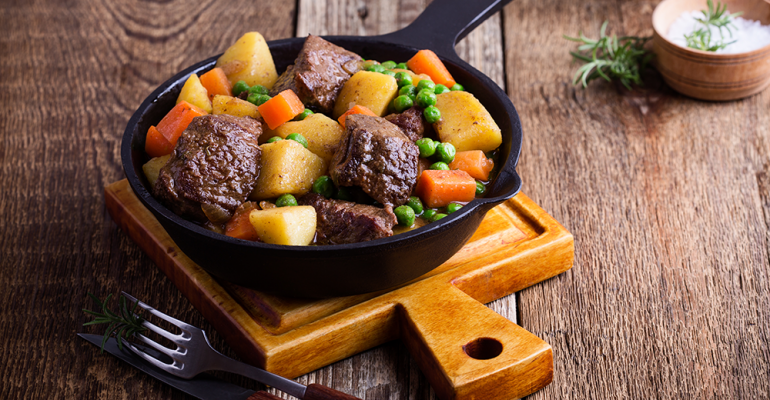Nancy, this sucks.
I know I’m a professional writer, but I can’t think of a better way to put it. The stock market’s collapsing, restaurants are closing left and right, many I fear never to reopen, and thousands and thousands of people are going to die from COVID-19. We’re in for a miserable spring, probably a miserable summer, and on the other side we’ll have a shocked nation seeking comfort.
It comes as no surprise that restaurants are rising to the occasion. Forced to shut their dining rooms, they amped up their delivery and takeout games. If they were unable to or uninterested in making that work, they turned their kitchens into food pantries to feed their recently laid off workers or the public at large. They pooled resources, formed online communities to share ideas and information and to lobby local and federal officials for the financial and regulatory help they need. And some local officials responded with breathtaking speed. New York and California, both hit hard by the novel coronavirus and neither known for their agile bureaucracies, within days of perceiving the seriousness of the outbreak relaxed their liquor laws and allowed for high-margin alcohol deliveries from restaurants that were forbidden from doing that before.
 Restaurants reimagined themselves virtually overnight, with fine-dining restaurants Canlis in Seattle and Alinea in Chicago both offering their versions of comfort food — to be delivered by Canlis and available for curbside pickup at Alinea, for order by the reservation software Tock, which rejiggered its software to make that possible. Tock and Alinea are both owned by entrepreneur Nick Kokonas, but that doesn’t keep it from being a great idea. Tock competitor Resy soon followed suit.
Restaurants reimagined themselves virtually overnight, with fine-dining restaurants Canlis in Seattle and Alinea in Chicago both offering their versions of comfort food — to be delivered by Canlis and available for curbside pickup at Alinea, for order by the reservation software Tock, which rejiggered its software to make that possible. Tock and Alinea are both owned by entrepreneur Nick Kokonas, but that doesn’t keep it from being a great idea. Tock competitor Resy soon followed suit.
Canlis also started offering bagels and breakfast sandwiches in the morning and burgers, sandwiches, salad and ice cream at lunch.
All of this happened in a week or less.
I could go on listing great things that restaurants and their partners have done, but everyone can read about them in Nation’s Restaurant News and Restaurant Hospitality. Instead I’d like to take a look at what I think restaurant customers are going to want to eat and drink in the months, and maybe years, to come.
We’ve seen crises before, and we have a good idea of how people’s palates respond to them.
After September 11, 2001, and the financial crisis of 2008, consumers quickly shifted away from highbrow intellectual food in favor of hamburgers and grilled cheese sandwiches and meat loaf and pot pie and ice cream and anything else that would let them just shut off their brains and chew. Despite all the fitness tips for shut-ins that I’ve been seeing online (if I see one more dude post a video selfie of himself doing pushups…) grain bowls are likely to give way to mac & cheese or mashed potatoes.
There are actually physiological reasons that people turn to starchy foods in times of stress. The consumption of relatively simple carbohydrates like white bread and pasta (and potatoes) as well as sugar triggers dopamine production in the brain which, among other things, can enhance contentment. Starches also trigger insulin production, which clears your bloodstream not only of sugar but also of other substances, leaving a pathway for the amino acid tryptophan (found in many proteins) to go straight to your brain where it’s made into the mood stabilizer serotonin.
But apart from the chemistry, food from our childhood often takes us to a happy place in our minds, and we’re all longing to go there now.
In 2008-2009, we also saw a rapid decline in sale of cage-free eggs and other products that, as morally upstanding as they may seem, are pricier than some alternatives. If compostable bowls or other low-waste and no-waste items cost more, fewer customers are going to be interested in the medium term.
That might mean that, once the lockdowns are lifted, delivery will take a hit. Sure, it’s nice to have food delivered to your doorstep, but it’s not cheap. Besides, after being cooped up for as long as we’re going to be cooped up, people are likely to want to go out.
Or maybe not: Delivery seemed to be so strongly the direction we were going even before the pandemic, that it might be here to stay.
Cage-free eggs eventually came back, after all.
Besides, during recessions people do splurge on small luxuries. An extravagant vacation might be out of reach as people tighten their belts, but an occasional few hours of indulgence are going to happen, so it might be wise for operators to invest in premium liquor and fine bottles of wine, because I bet there will be demand for them.
What do you think, Nancy? I know everyone’s crystal balls are as murky as they’ve ever been right now, but what do you see on the horizon?
Or, if you don’t want to go there, what heroic or inspiring acts have you seen recently that you’d like to share with the world?
Nancy Kruse responds
 You’ve hit the nail squarely on the head, Bret, relative to the utter and complete suckiness of our current situation. You reference both 9/11 and the 2008 financial meltdown as touchpoints, but as I write this, we are looking at something that is potentially more destructive, an unprecedented one-two punch that combines the worst of both disasters and has set the restaurant industry back on its heels.
You’ve hit the nail squarely on the head, Bret, relative to the utter and complete suckiness of our current situation. You reference both 9/11 and the 2008 financial meltdown as touchpoints, but as I write this, we are looking at something that is potentially more destructive, an unprecedented one-two punch that combines the worst of both disasters and has set the restaurant industry back on its heels.
Despite, or perhaps because of, the ceaseless bleat of talking heads and endless torrent of bad news spewed across the media, restaurateurs have rallied and unleashed an extraordinary amount of creativity to address the crisis.
Caring for coworkers is a major theme. The Restaurant Workers Relief Program, spearheaded by culinary luminaries like Edward Lee in Louisville, Alon Shaya in Denver and Paul Kahan in Chicago among others, specifically addresses the needs of employees at independent operations in those cities.
Small chains are on board, too, as with Cameron Mitchell Restaurants, which has shuttered 37 stores and been forced to furlough most of its 4,500 workers. To buffer the impact on associates, CMR has established an Associate Relief Fund supported by donations from management and 100% of online gift card sales. Associates will receive checks in April.
Chefs are caring for communities, too. In business less than six months, Hope Breakfast Bar in St. Paul, Minn., had been playing to turn-away crowds clamoring for fancies like Cereal Milk French Toast topped with cotton candy. Breakfast will have to wait, as the restaurant has repositioned itself as a community kitchen that, thanks to a legion of volunteers and a food truck, delivers hundreds of meals a day to those in need. No strings attached. Chef Brian Ingram, Hope’s principal owner, garnered national attention for his efforts, and he told an interviewer from CBS News that he intends to provide food for as long as his money holds out.
A hiring frenzy is raging in some quarters. A few days ago, I received an email invitation to start driving immediately for Jet’s Pizza, a 386-unit Detroit pie specialist based in Sterling Heights, Mich., with locations in 20 states. The letter dangled a pay rate of $13 to $16 an hour and appealed specifically to restaurant and bar workers, teachers and others grappling with unexpected unemployment. This comes on the heels of giants like Papa John’s and Domino’s advertising aggressively not only for delivery drivers, but also all other positions needed to keep stores running. The former is looking to fill 20,000 slots, and the latter has 10,000 open positions.
Supermarkets are circling. They’re getting aggressive here, Bret, and I’m struck every time I walk into my local Publix in Atlanta to find a card table with a large “now hiring” sign just inside the front door. In New Orleans, the heart of one of our most vibrant food cultures, Rouse Markets is courting former hospitality employees with a promise to teach them the grocery business. The company is also making meals to go available from some of the city’s most storied restaurants, like the Turtle Soup or Grits and Grillades from Commander’s Palace, and it has purchased a huge inventory of USDA Prime steaks from Dickie Brennan’s Steakhouse to sell in its meat cases.
Restaurants are going grocery on us, too. Some Texas Roadhouse units are turning their restaurants into corner stores and providing consumers an alternative to jam-packed supermarket aisles by selling the contents of their pantries and freezers, including freshly-baked bread and the signature honey-cinnamon butter that goes on top.
This kind of crossover is breaking out all over, as at Atlanta’s Southern Bistro, whose newly opened General Store offers everything from prepared foods to dry goods to wine and supplies. Those supplies include latex gloves and toilet paper. This last necessity figures prominently in Lazy Dog Restaurant & Bar’s Pantry, where the $40 Home Essentials package includes an expansive array of dinner fixings like three pounds of raw chicken breast, two pounds of rice and, yes, three rolls of toilet paper.
There’s so much more worth noting as operators grapple with how to maintain a customer connection. Chef Alex Belew at popular Dallas & Jane in suburban Nashville has revved up online cooking classes to teach patrons the tricks of the trade, while keeping them engaged until he can reopen.
You asked what’s ahead, Bret, and the answer is recovery, although at this point, it is impossible to forecast its timing and trajectory. There are a few things worth considering, though.
First, recovery will depend on consumers’ confidence in restaurants. Wilson Tang runs venerable Nom Wah Tea Parlor, the oldest restaurant in Manhattan’s Chinatown, along with seven other locations in the United States and China, and he notes that after a six-week closure, his outpost in Shenzhen, China, has reopened to OK business. Traffic is slow to build there, and once we’re up and running, it may grow slowly here, too, as consumers gradually become comfortable leaving the facemasks and hand sanitizers at home.
When they do return, their focus will be on value with a capital ‘V,’ and we’ll need to work out a new value equation to enable robust recovery. Unlike you, I’m not sure premium liquor and fine wine will be part of the package, at least not for most folks outside of Brooklyn. But creative, well-priced cocktails and other adult beverages most certainly will be. And yes, comfort foods will undergo yet another renaissance and revitalization, but so will ethnic foods that appeal to cabin-fevered customers itching for affordable adventure.
Delivery isn’t going anywhere, but some providers will be going to the boneyard. Fact is that virtually none of the leading players has demonstrated a sustainable business model, and while the current situation will provide a lifeline for some, it’s a temporary fix. A looming segment shakeout will come, and will result in a niche occupied by a very small number of the best-capitalized players.
And this unexpected and extraordinary cross-fertilization between grocers and restaurateurs that touches both product and people could ultimately yield some interesting long-term opportunities for both.
All of this remains to be seen, of course. In the meantime, I hope you stay safe and well. In lieu of Cereal Milk French Toast with cotton candy on top, I wonder if you’d shoot me the link to the hunky dude doing pushups. It could be just the antidote to my own shelter-in-place blues.
Contact Bret Thorn at [email protected]
Follow him on Twitter: @foodwriterdiary
Nancy Kruse, president of the Kruse Company, is a menu trends analyst based in Atlanta and a regular contributor to Nation’s Restaurant News.
E-mail her at [email protected]





